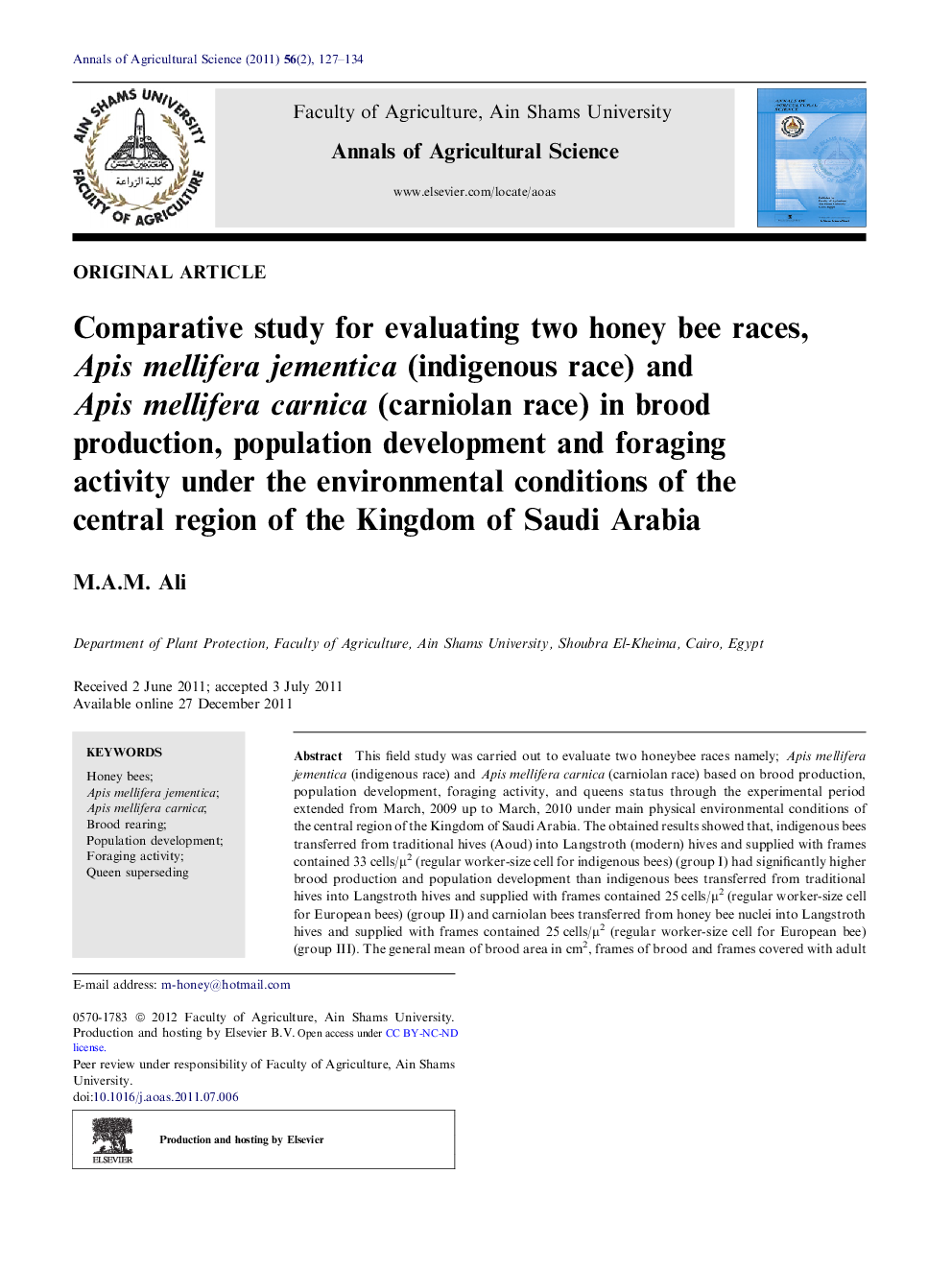| کد مقاله | کد نشریه | سال انتشار | مقاله انگلیسی | نسخه تمام متن |
|---|---|---|---|---|
| 4492957 | 1623307 | 2011 | 8 صفحه PDF | دانلود رایگان |

This field study was carried out to evaluate two honeybee races namely; Apis mellifera jementica (indigenous race) and Apis mellifera carnica (carniolan race) based on brood production, population development, foraging activity, and queens status through the experimental period extended from March, 2009 up to March, 2010 under main physical environmental conditions of the central region of the Kingdom of Saudi Arabia. The obtained results showed that, indigenous bees transferred from traditional hives (Aoud) into Langstroth (modern) hives and supplied with frames contained 33 cells/μ2 (regular worker-size cell for indigenous bees) (group I) had significantly higher brood production and population development than indigenous bees transferred from traditional hives into Langstroth hives and supplied with frames contained 25 cells/μ2 (regular worker-size cell for European bees) (group II) and carniolan bees transferred from honey bee nuclei into Langstroth hives and supplied with frames contained 25 cells/μ2 (regular worker-size cell for European bee) (group III). The general mean of brood area in cm2, frames of brood and frames covered with adult bees were (2813.13, 1730.94 and 1867.05 cm2/colony), (3.13, 2.21 and 2.07 brood comb/colony) and (6.39, 4.44 and 4.38 comb of bees/colony), in groups I, II and III, respectively. The indigenous race significantly surpassed the carniolan race in brood production during summer season during high temperature commonly exceeds 45 °C. Data also showed that no significant difference in foraging activity between the two examined races (indigenous and carniolan race) for gathering pollen during the first inspection period extended from 6 to 7 am during the relatively cold, moderate and very high air temperature during inspection months. This situation differed between the two examined races during the second and third inspection period extended from 11 to 12 am and 4 to 5 pm, relatively high air temperature in June, August and October, during which the indigenous race significantly surpassed the carniolan race in foraging activity for gathering pollen. Moreover, the foraging activity was significantly higher in the first inspection period (6–7 am) than the other two periods (11–12 am and 4–5 pm). When the numbers and percentages of died or superseded queens in the three inspection groups (I, II and III) were studied, no died or superseded queens were found in honey bee colonies in group (I) during the experimental period which was extended from March, 2009 to March, 2010. However, the percentages of failed queens during the experimental period were 0.00%, 45.00% and 60.00% in groups (I, II and III), respectively. The results also showed that increasing the size of the worker cells negatively affected brood production and population density in indigenous race and indigenous race is more tolerant and well adapted to the environmental conditions in the search area than carniolan race (imported). Therefore, this study recommends that improving the characteristics of indigenous and carniolan races should take place through breading programs, because the indigenous race shows high ability and good adaptation to the environmental conditions in the area but it is small in size, in addition their honey stomach and pollen basket are small, meanwhile the carniolan race is large in size and their honey stomach and pollen basket are great, but is not acclimatized to environmental conditions in the region, especially during the hot summer when the air temperature exceeds 45 °C.
Journal: Annals of Agricultural Sciences - Volume 56, Issue 2, December 2011, Pages 127–134